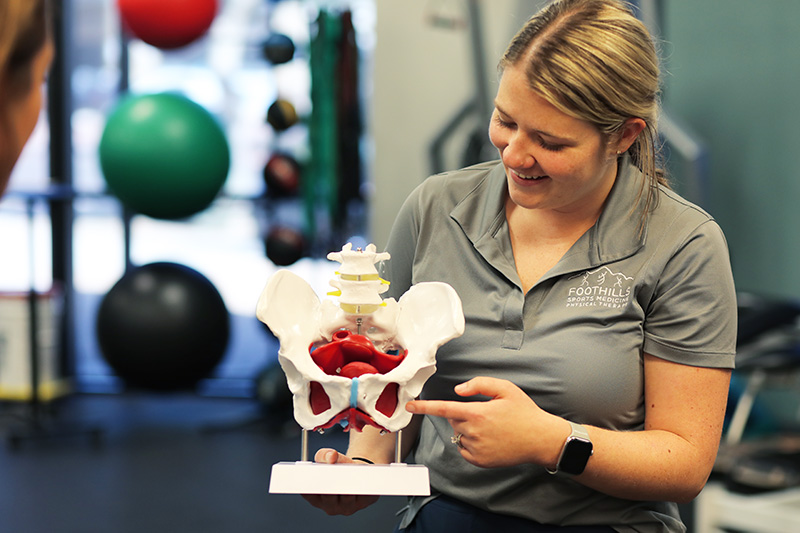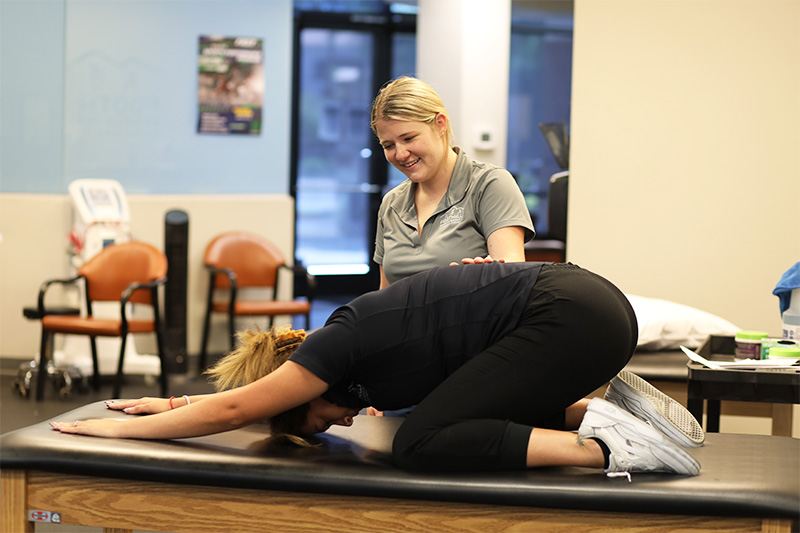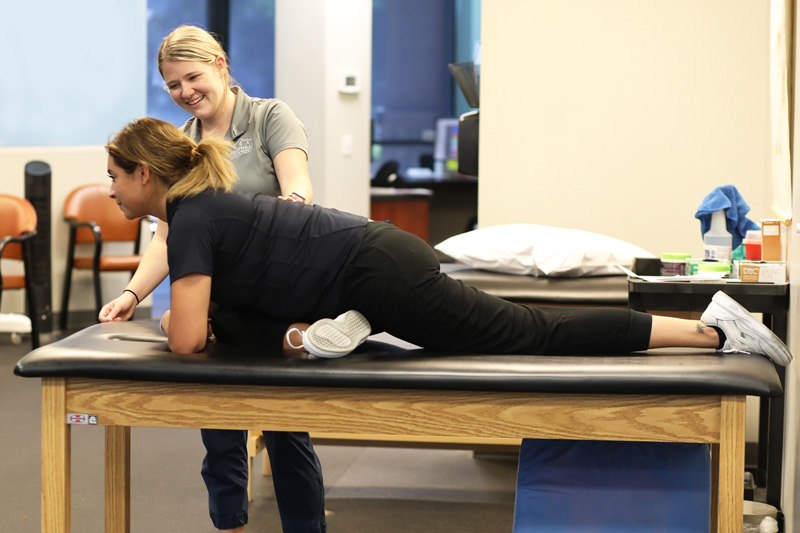by Ashley Staehling, PT, DPT
Pregnancy imposes a heavy toll on the body. Your body adjusts with increasing weight leading to aches and pains in different muscles and tissue. Most women experience low back pain in pregnancy due to sciatic nerve pain. This condition is commonly known as sciatica and manifests as radiating pain that flows along the sciatic nerve in the lower spine on the back of your thigh.
Causes of Sciatica In Pregnancy
Sciatica occurs when additional stress is placed on the sciatic nerve as it is formed coming out of the spine or where it passes through the back of the hip. Stress aggravates the sciatic nerve causing inflammation that may result in pain, numbness, or tingling. Causes of similar symptoms may include a herniated disk or bone spurs on vertebrae pinching the nerves as they form the sciatic nerve.
During pregnancy, the body releases a hormone called relaxin, which allows more stretching and movement through different joints, specifically the pelvis, to prepare for childbirth. The combination of increased mobility through your joints and the baby’s growing size exerts increasing pressure through the pelvis and, in turn, the sciatic nerve.

Sciatica during pregnancy can occur at any stage but is the most common in the third trimester due to the increasing size and weight of the baby.
Sciatica pain during pregnancy may occur intermittently or be constant for some women. After childbirth, some women fully recover from their sciatica without outside help. However, some women develop postpartum sciatica that continues due to weakened abdominals and stretched ligaments.
Symptoms of Pregnancy-Related Sciatica
Aches related to sciatica range from mild to excruciating pain. It often involves a tingling sensation in one or several body parts. The symptoms include:
- A tingling sensation that travels from the pelvis through the back of your leg
- A burning sensation in the buttocks and lower back
- The sudden jolt of pain similar to an electric shock
- Numbness
- Muscle weakness
- A tingling sensation in one leg or foot
- Pain that worsens after sneezing or sitting for an extended period
Stretches for Pregnancy-Related Sciatica
Child’s Pose
This yoga pose is excellent for rest and restoration and gives your back and thigh muscles a good stretch.

- Kneel on a soft surface like a carpet or yoga mat.
- Hold your feet together and spread your knees apart to give your belly space.
- Keep your back straight and place your forehead on the floor.
- Spread your arms out straight past your head while inhaling.
- Sit back on your legs and bring your hips towards your heels while inhaling.
- Take several deep breaths while stretching your arms farther forward.
- Move your hands back slowly to return to a kneeling position.
Seated Piriformis Stretch
Spasms in the piriformis muscles in your hips can cause sciatic pain.

- Sit on a stool with your feet flat on the floor.
- Put the right ankle on the left knee.
- Lean forward slowly while keeping your back straight.
- Stretch your lower back and glutes.
- Remain in this pose for 30 seconds.
- Repeat on the other side.
Pigeon Pose

- Roll a carpet, towel, or yoga block on the floor.
- Kneel and put your hand on the ground.
- Slide the right knee forward between your hands.
- Slide the left leg back while keeping your foot on the floor.
- Place the mat or rolled towel under your right hip to make the stretch easier and give your belly some room.
- Lean forward on your right leg and slowly lower yourself to the ground while supporting your head and arms with a pillow.
- Hold the position for one minute.
- Repeat on the other side.
General Tips for Managing Pregnancy-Related Sciatica
- Use a heating pad to relax tight muscles aggravated by the extra weight. You can also put a cold pack on your lower back and rear pelvis to relieve the pain.
- Engage in low-intensity activity to enhance blood circulation in the muscles. Gentle movements such as going for a walk can help. You can also engage in low-impact activities such as swimming or running on the treadmill.
- Get a prenatal massage to reduce stress and improve blood circulation.
- Rest on the side that doesn’t hurt when lying down to reduce pressure on the compressed nerve. Further, use a body pillow to support your hips and legs.
- Keep exercising even after birth to strengthen your muscles and reduce pressure on the sciatic nerve. You can do light physical activities such as walking while giving your body ample rest.

When to Talk To Your Doctor
Sciatic pain takes time to heal, even with at-home exercises. Most women experience discomfort, but severe pain is rare. However, if the pain is excruciating, medication can help. Always consult your doctor before taking medication to ensure it is safe for your baby.
If you have sciatic pain or any other pregnancy-related discomfort, Foothills Sports Medicine Physical Therapy can help; schedule a free assessment. Foothills is a group of 27 physical therapy clinics that serve the Metro Phoenix area. We have a holistic approach to treatment in a friendly environment. Our dedicated staff will prepare a personalized plan based on your medical history, lifestyle, and fitness levels.




